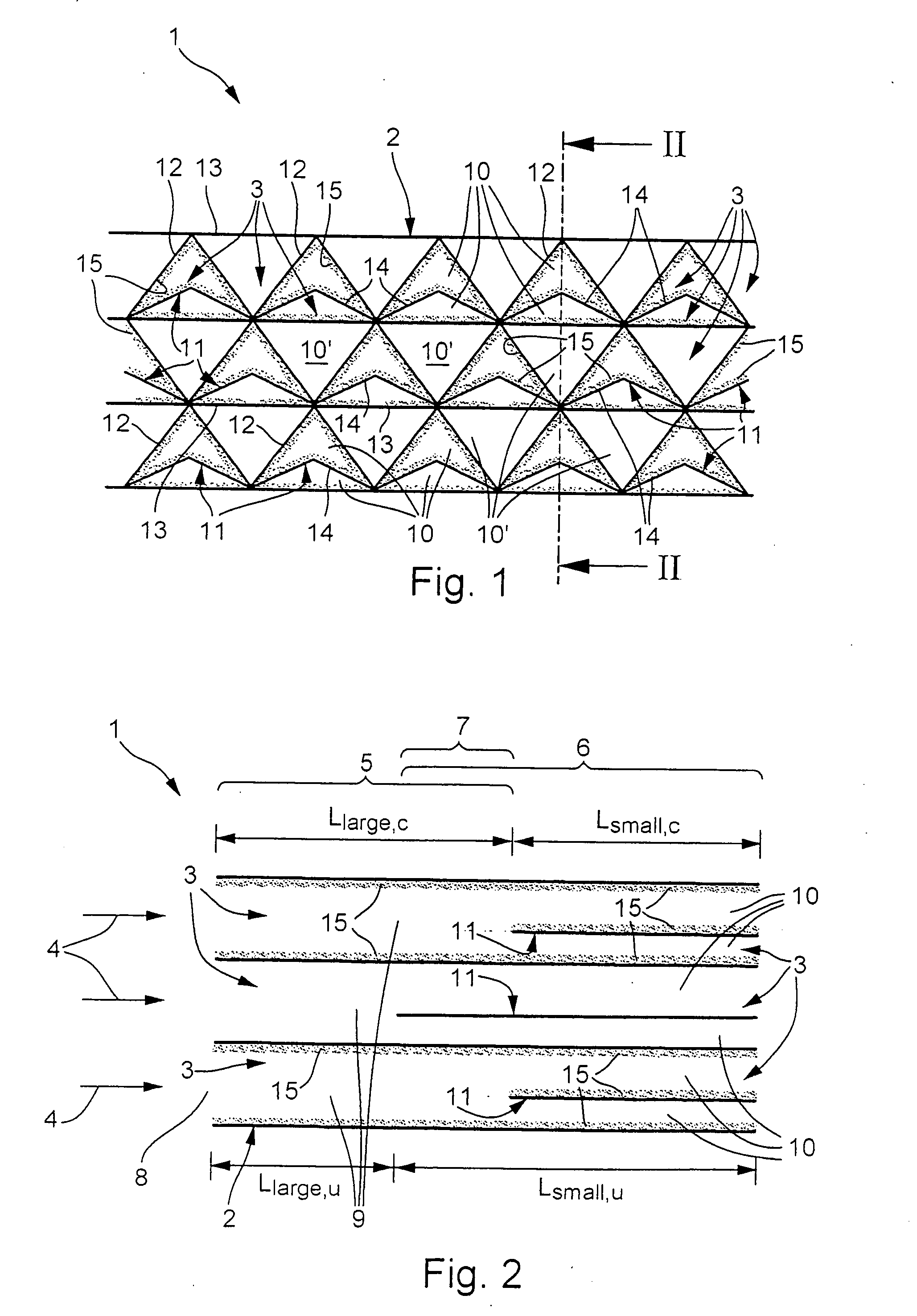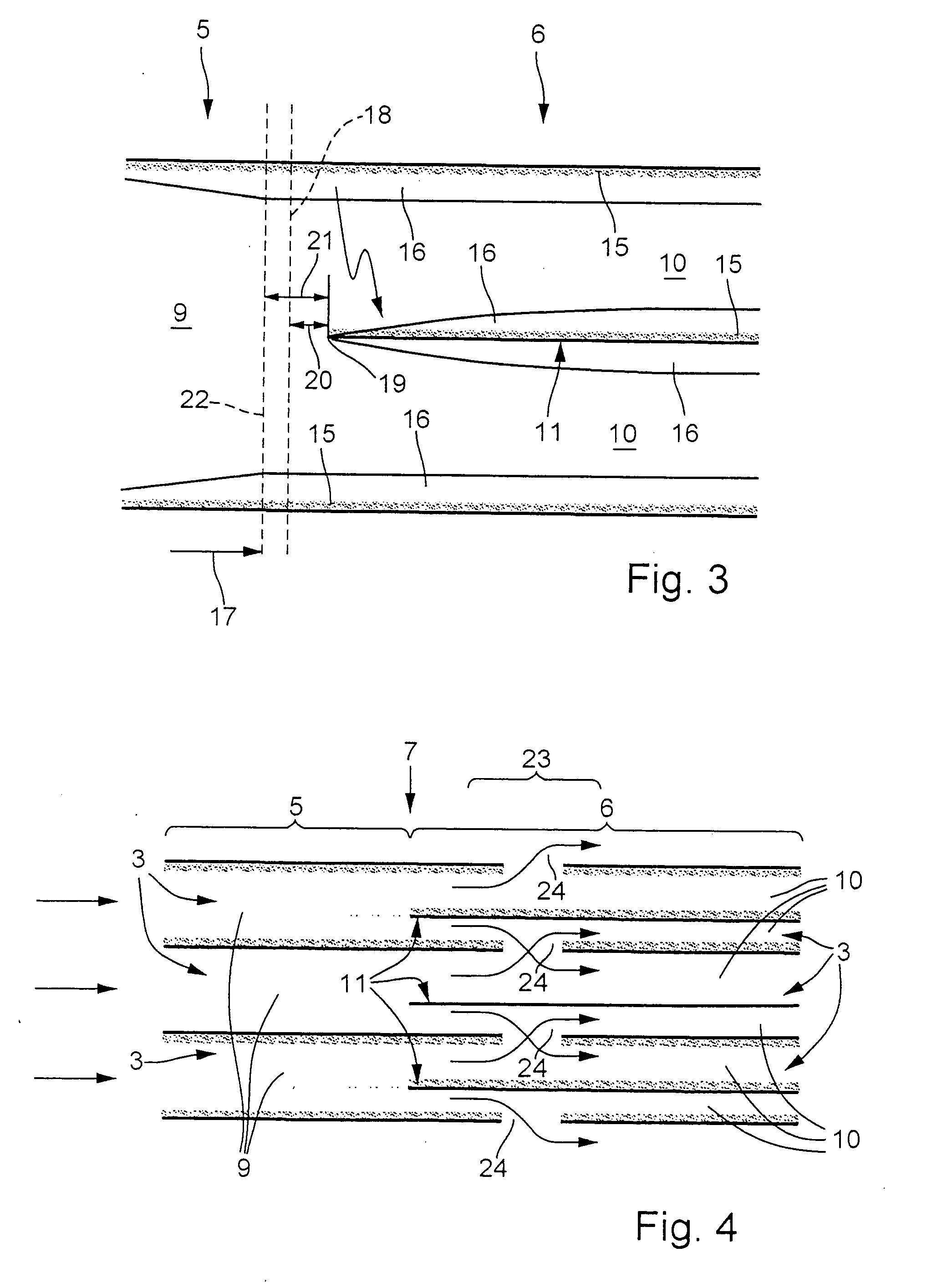Catalyst
a technology of catalysts and catalysts, applied in the field of catalysts, can solve the problems of relatively large installation space of catalysts and relatively long construction in the main throughflow direction, and achieve the effects of reducing heat dissipation, reducing heat dissipation, and shortening the development length of the boundary layer
- Summary
- Abstract
- Description
- Claims
- Application Information
AI Technical Summary
Benefits of technology
Problems solved by technology
Method used
Image
Examples
Embodiment Construction
[0022] In accordance with FIGS. 1 and 2, a catalyst 1 according to the invention has a structure 2 which has or forms a plurality of channels 3 which run parallel to one another and parallel to a main throughflow direction 4, indicated by arrows in FIG. 2, of the catalyst 1. In the specific embodiment shown here, moreover, the channels 3 run in a straight line.
[0023] As can be seen from FIG. 2, the catalyst 1 or its structure 2 is divided into at least two sectors, namely an upstream first sector 5 and a downstream second sector 6, as seen in the main throughflow direction 4. The sectors 5, 6 are marked by curly brackets in FIG. 2, making it clear that the two sectors 5, 6 overlap in a transition region 7 which is likewise marked by a curly bracket. The upstream first sector 5 includes an inlet 8 of the catalyst 1 and is therefore also referred to below as inlet sector 5, whereas the downstream second sector 6 is also referred to below as succeeding sector 6. Accordingly, the inlet...
PUM
| Property | Measurement | Unit |
|---|---|---|
| distance | aaaaa | aaaaa |
| area | aaaaa | aaaaa |
| cross-sectional area | aaaaa | aaaaa |
Abstract
Description
Claims
Application Information
 Login to View More
Login to View More - R&D
- Intellectual Property
- Life Sciences
- Materials
- Tech Scout
- Unparalleled Data Quality
- Higher Quality Content
- 60% Fewer Hallucinations
Browse by: Latest US Patents, China's latest patents, Technical Efficacy Thesaurus, Application Domain, Technology Topic, Popular Technical Reports.
© 2025 PatSnap. All rights reserved.Legal|Privacy policy|Modern Slavery Act Transparency Statement|Sitemap|About US| Contact US: help@patsnap.com



